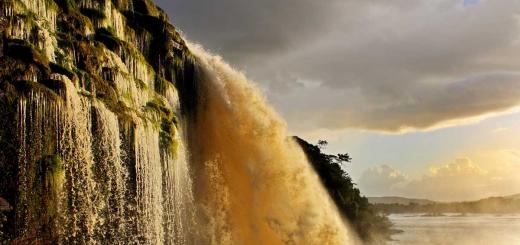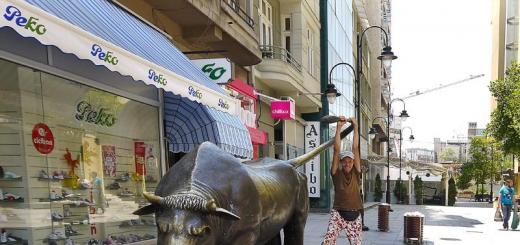Kingdom: Animals (Animalia).
Type: Chordates (Chordata).
Class: Reptiles (Reptilia).
Order: Turtles (Testudines).
Family: Terrestrial turtles (Testudinidae).
Genus: American Land Turtles (Chelonoidis).
Species: Elephant turtle (Chelonoidis nigra).
Subspecies: Abingdon elephant turtle (Chelonoidis nigra abingdoni).
WHY INCLUDED IN THE RED BOOK
The Abingdon elephant turtle is one of the most striking examples of the Red Book being a “living” book. Changes in it happen every day and, possibly, every hour. Scientists do not always have time to quickly track what is happening and find a sufficient number of convincing facts. Obviously, by the time this edition is published, the Abingdon elephant turtles will be categorized as extinct in the EX category, marked in black. As we have already said, when the work on the description of this subspecies began, the last representative of the rare taxon was still alive. His name was Lonely George.
Lonely George was found on Pinta Island (Abingdon) on December 1, 1972 and was taken under surveillance. The last years of his life he lived in the Galapagos National Park of Ecuador, at the station. Charles Darwin on the island of Santa Cruz. Here, George was well looked after and hoped to get viable offspring from him. Several unsuccessful attempts were made to breed George with females of other subspecies. Although the eggs were laid, none of them hatched. Scientists believe that at the time of his death, George was 90-100 years old. Since these reptiles were long-livers in the animal kingdom and almost until the end of their lives retained the ability to reproduce, then during George's life there was still hope for a successful restoration of the subspecies population. Researchers will have to scrutinize the genetic makeup of populations of other related taxa found in the Galapagos Islands. Real proof is needed to show that George was in fact "the last of his kind."
In the XIX century. Abingdon elephant turtles were found in abundance on Pinta Island. The main reason for the disappearance of the subspecies was that almost all vegetation on the island was exterminated by feral goats. As a result, the turtles have no food resources left. Sluggish and slow reptiles were easy prey for poachers.
By the early 1970s. XX century only one representative of the subspecies managed to survive. Until recently, scientists hoped to restore the subspecies and return it to its natural habitat. In addition, numerous attempts to regulate the number of goats on Pinta Island were eventually crowned with success, and the island's grass cover was finally restored. Lonely George was a symbol of the Galapagos Islands and the conservation movement in general. Various celebrities have come to visit Lonely George, including Prince Charles and Hollywood actress Angelina Jolie.
WHERE DIVES
The Abingdon elephant turtle is an endemic subspecies that lived exclusively on the uninhabited island of Pinta in the Galapagos archipelago.
HOW TO FIND OUT
Abingdon elephant turtles 100% justified the specific name given to them - "elephant". They were real giants, sometimes reaching a body weight of 300-350 kg. Their large, ossified carapace was painted in a rich gray-brown tone. In all turtles, including elephants, the ribs and spine are inseparably fused with the carapace. Such a system forms a powerful defense for the body. Therefore, the myth that a turtle can leave its "house" has no scientific evidence. The body of the turtles was covered with dry wrinkled skin. The elephant turtles had a long neck and a relatively small head. The males were almost twice the size of the females.
LIFESTYLE AND BIOLOGY
Cold-blooded animals, turtles crawled out in the morning hours to bask in the sun. The dark color of the shell helped to absorb more sunlight and warm up the body better. Then the turtles spent most of their time looking for food. Moving at an average speed of 0.3 km / h, they systematically surveyed the territory of their home island, hoping to find fresh, juicy grass to support their vitality. Elephant turtles were distinguished by almost undeveloped hearing, but excellent sense of smell and good eyesight.
During the mating season, males staged ritual battles, trying to determine the most important and strongest. They stretched their necks, opened their mouths, and took ritual postures. At this time, as well as at the moment of mating, the males could puff and hiss, trying in all possible ways to express the emotions that overwhelmed them. For laying, females went to dry, well-warmed sandy beaches. Sometimes it took them several days to dig a hole about 30 cm deep. Wielding their hind legs, the female Abingdon elephant turtle patiently performed difficult and serious work. The sex of the embryos in these reptiles depends on the temperature of the environment. At lower temperatures, more males are born, at higher temperatures, females. The incubation could last from four to eight months. After birth, babies faced many dangers. First of all, they needed to get to the surface and not fall prey to birds of prey. Sexual maturity occurred at the age of about 20-25 years.
The elephant turtles have made a huge contribution to the development of the general theory of evolution. After all, it was them, or rather the external differences of individuals living in different environmental conditions, that Charles Darwin noticed during his round-the-world trip on the Beagle. The fact is that the size and shape of the shell in representatives of different populations of elephant turtles are very different. This made the great scientist think seriously about the influence of the environment on the body.
5 041On Sunday morning, June 24, perhaps the most famous tortoise in the world, the Galapagos named Lone George, died. Together with George, a whole subspecies of giant reptiles disappeared from the planet, which once inhabited the Galapagos Islands in a multitude, but were exterminated by people in just a hundred years.
Background
The first of the many islands in the Galapagos archipelago was formed about 5-10 million years ago. Its "parent" was a volcano: the material of which the island is composed is solidified lava. After the first island, the second, the third and so on were formed - now the group includes 16 large islands and many small formations. The archipelago is located in the area of the Galapagos Rift - a transverse fault in the earth's crust, which manifests itself as constant lava outbursts. This volcanically active zone is called the Nazca plateau, and it slowly moves to the southeast at a speed of about seven centimeters per year. Accordingly, the older islands recede over time, giving way to the younger ones.
Moving away from the place of their formation, the islands are slowly covered with vegetation, although rather scarce in comparison with the mainland regions located at the same latitude - that is, almost at the equator. But the relative poverty of the plant world is more than compensated for by its uniqueness. There are practically no sources of fresh water on the islands, and the climate there is very cool, so the plants that dared to gain a foothold on the Galapagos had to develop a fair amount of adaptations to harsh conditions.
Island animals are also markedly different from their relatives on the "mainland" - the overwhelming majority of species living on the Galapagos are endemic, that is, unique to this particular place. Remaining on the islands, tetrapods and birds received a dull landscape, a harsh climate and often a very meager choice of food, but they saved themselves from the countless predators of the mainland.
History
George's ancestors appeared on one of the smallest islands of the Pinta archipelago a long time ago. Giant turtles - the length of the back shield of their shell reaches one or more meters - had no natural enemies on the Galapagos, so they multiplied for pleasure and roamed freely around the island, eating juicy grass. There were so many unhurried reptiles covered with thick bone plates that the islands were even named after them - the Spanish word "galapago" means one of the species of aquatic turtles.
While we were at the top of the island, we ate exclusively on turtle meat. The fried breast of the shell with the remaining meat on it is very good, and the cubs make an excellent soup. But in general, turtle meat, for my taste, is nothing special.
The island idyll remained unchanged for millennia, until one day, which was no different from others, people appeared on the island. They quickly realized that the turtles were not able to defend themselves against enemies, and since there was no other food on the Pinta, they quickly mastered the preparation of various dishes from turtle meat. The sailors hunted not only adult turtles, but also cubs, from which a very tender soup was obtained.
A little later, people decided to colonize the Galapagos and, in order to make life on the uncomfortable islands more enjoyable, they brought pets with them. This turned out to be a fatal decision: if the pigs simply trampled the grass, then the goats ate it at such a speed that entire turtle families died of hunger. There were also dogs that did not dare to attack on turtles, but with great pleasure they caught unsuspecting iguanas. Gradually, giant turtles on Pinta Island were encountered less and less, until they disappeared altogether.
Several more decades passed, and when it seemed that the island was completely destroyed, the situation suddenly changed for the better. Similar processes were taking place on the islands adjacent to Pinto, and although the consequences were not so catastrophic due to the larger size, it became obvious to ecologists that the Galapagos needed to be saved, and urgently. In order to prevent the transformation of the unique nature reserve into a lifeless desert, in 1974 a large-scale program to restore the turtles population was launched on the archipelago. Scientists have also tried to save other endemic animals.
To stop the destruction of the islands, it was necessary, first of all, to get rid of goats and other imported species. In 1959, fishermen brought with them only three herbivores: a male and two females. By 1973, more than 30 thousand individuals lived on the island. The extermination of the goats that bred on the archipelago required a lot of efforts from ecologists: they finally managed to cope with this task only in 2009. During the shock phase, more than 80 thousand animals were spent and over six million dollars were spent.
In parallel, the researchers, as best they could, restored the number of turtles on the islands. As a result of their efforts, the number of giant reptiles has increased from 3 thousand in 1974 to 20 thousand today.
The present
But for the subspecies Chelonoidis nigra abingdoni, to which Lonely George belonged, the story, alas, was over forever. At the start of the Galapagos restoration program, it was believed that C. n. abingdoni died out, but in 1972 (according to other sources, in 1971), the Hungarian biologist Jozsef Vagvolgyi noticed a characteristic silhouette on the island of Pinta. The miraculously preserved turtle was placed in a specially equipped aviary and began to search for partners suitable for George.
Since other known representatives of the subspecies C. n. abingdoni not left, scientists selected girlfriends for George from the closest groups possible. In the end, we settled on two females caught on the neighboring island of Isabella. For the first 15 years of living together, George showed no interest in the ladies, but in 2008 one of the turtles laid eggs. Scientists immediately placed them in an incubator, but, despite all the careful nursing, not a single cub never hatched. A year later, one of George's companions laid eggs again, and again to no avail.
The lone male no longer tried to leave offspring - perhaps the insignificant difference for humans between the two subspecies seemed too great for him. In 2011, two females from the island of Hispaniola, belonging to the subspecies, were settled in George's aviary. C. n. hoodensis- a closer analysis showed that they are genetically closer to George than the turtles from Isabella. New friends remained with the rescued until his death, but George did not want to mate with any of them.
The corpse of the last representative of a once numerous subspecies C. n. abingdoni discovered in the early morning of June 24 by the aviary caretaker who has been caring for the turtle for over 40 years. Judging by his posture, George was heading for a watering hole. The exact cause of death of the animal is still unknown - in the near future, experts intend to conduct an autopsy and understand what happened to him. By the standards of giant turtles, believed to live for two hundred years, George was still very young - he was hardly over a hundred.
Future
Despite all the tragedy of what happened, some researchers believe that the subspecies C. n. abingdoni can still be restored. According to some reports, the giant tortoise that lives at the Prague Zoo is of the same species as George. Later, DNA analysis refuted these assumptions, but in 2007, scientists discovered animals on Isabella Island, whose genes contained about half of George's genes. In other words, the turtles found were most likely born of a union C. n. abingdoni with a representative of some other subspecies. And it cannot be ruled out that the parent of unusual animals has not yet died, which means that it is possible to find him.
The last known representative of the subspecies Abingdon elephant turtle (Latin Geochelone nigra ssp. Abingdoni), a male named Lone George, died on June 24 in Galapagos National Park.
Lonely George (Spanish Solitario Jorge; English Lonesome George) is a male Galapagos tortoise, considered the last and only representative of the subspecies Abingdon elephant tortoise (Latin Geochelone nigra ssp. Abingdoni). Elephant turtles are the rarest species of giant Pinto turtles, found exclusively in the Galapagos Islands. George has become a symbol of conservation in the Galapagos Islands.
George was found by a Hungarian scientist on the island of Pinta (a small island in the north of the archipelago, also called Abingdon) in 1972. Named after American actor George Gobel. In theory, turtles of this species are able to maintain the ability to reproduce even at the age of 200 years. After George's death, the subspecies of the Abingdon elephant turtle is considered extinct.

For decades, zoologists have tried to get offspring from George, but to no avail. At one time, scientists believed that George was generally incapable of reproduction, but this turned out to be not the case. In May 2007, after genetic analysis of 2,000 turtles, a female from Wolf volcano was found, genetically similar to George, being a hybrid and having a paternal relative of George, after which there was hope for the continuation of the genus. Fertilization took place, but the embryos in the eggs were not viable.

George was often called the most famous bachelor in the world.
Lonesome George: The Life and Loves of the world "s most famous tortoise" is dedicated to Lonely George.

On June 24, 2012, the body of a unique reptile was discovered with no signs of life by the reserve keeper Fausto Llereno, who had been caring for a turtle for 40 years. Lonely George died at the age of about 100 years without giving birth. This means the extinction of the corresponding subspecies. Once opened, the turtle will be embalmed and displayed in a local museum so that future generations have a visual representation of the extinct reptile.
I dedicate this post to the memory of Lonely George, the last representative of a rare subspecies of armored reptiles - the Abingdon elephant tortoise. Lonely George died yesterday in Galapagos National Park, where he has lived since 1972.
Sad news. The whole subspecies of a giant elephant turtle disappeared forever from the face of the Earth. In nature, there are practically no predators for which these reptiles could become prey. Only people actively destroyed elephant turtles. It is bitter to realize that the true culprit of this tragedy is again Homo sapience - HUMAN SANE !!! In the latter one already begins to doubt, analyzing the activity of the human race from its inception to the present day. Now we have no choice but to mourn our own sacrifice.
In the Galapagos Islands, Lonely George died - the last male giant elephant turtle at the age of one hundred years.
The most famous tortoise died in the Galapagos (photo: noblebrute.com)
According to reports from Galapagos National Park officials, Lonely George, the last and only member of the Abingdon elephant turtle subspecies, passed away on Sunday, June 24.
This morning, the park ranger came to see George, but found that his body was motionless and he did not react to the surrounding reality. His life has come to an end, - said the head of the Galapagos National Park Edwin Naula.
George was found on the island of Pinta in 1972 and has since become a "symbol" of the Galapagos Islands located in Ecuador.
Thousands of tourists came to Ecuador to see George (photo: noblepride.com)
Thousands of tourists came to the island every year to admire the "most famous bachelor in the world."
A book was also written about George - "Lonely George: The Life and Love of the Most Famous Turtle in the World". The author of the popular science book on the huge turtle was Henry Nichols.
Yana Shebalina, Life News Online
01:23 AM, Monday June 25th, 2012
http://lifenews.ru/news/95353
And now we have to get acquainted with the "biography" of the elephant turtle. So...
The elephant turtle is a real giant among all the members of the squad. This animal is considered a rare species today due to the fact that at one time it was the only food available for seafarers.
Navigators of the XXVI-XXVII centuries said that a myriad of elephant turtles were found on the islands of Mauritius, Madagascar, Reunion, as well as throughout the Galapagos archipelago. They gathered in huge herds of 2000 - 3000 animals. The ships that sailed to India always stopped near these islands to stock up on elephant turtles. At the same time, several hundred animals were immediately loaded on board. For 20 - 30 years, many captains have been collecting elephant turtles for sale. As a result, at the beginning of the 19th century, elephant turtles remained only in Madagascar and the Galapagos Islands. By the way, the Galapagos Islands were once called the Turtle, and now the elephant turtle is sometimes called the Galapagos.
Among the elephant turtles, there are giants, weighing 400 kg, and the length of the shell - more than a meter. In nature, there are practically no predators for which these reptiles could become prey. Perhaps only people actively destroyed elephant turtles. And for the same reason, today they are forced to protect these reptiles, which have significantly decreased in number.
The absence of dangers to some extent determined the appearance of the elephant turtle. Its carapace resembles a saddle and is wide open in front. Due to this openness, the elephant turtle is able to regulate its body temperature in the hot climate of the Galapagos Islands, where it lives. Male elephant turtles are noticeably larger than females and, due to their size, have always been interesting objects for zoos. But today all subspecies of this animal, of which there are about 16, are included in the IUCN Red List. Interestingly, the elephant turtle sometimes chooses plants that are poisonous to other animals as food. Undoubtedly, this animal can rightfully be called the main attraction of the Galapagos Islands. Charles Darwin also noted how interesting it is to observe the behavior of elephant turtles. In particular, he described such an unusual feature of the animal as deafness. Whether elephant turtles really have hearing problems, the scientist did not explain, but said that the steps of a person who met a turtle and followed it, the animal does not hear and is not frightened until the pursuer falls into its field of vision.
Other names
Chelonoidis elephant opus is the name of the elephant turtle species, derived from lat. Chelonoidis (genus of land turtles).
Testudo elephant opus - the name is derived from lat. Testudines (order of the tortoise) and Testudinidae (family of land turtles).
Geochelone elephant opus, Chelonoidis nigra, Geochelone nigra, Testudo nigra - lat. species name in combination with lat. nigra (black), a trait related to the predominantly dark color of the shell of the elephant turtle.
Galápagos giant tortoise, Galápagos tortoise - eng. Galapagos tortoise.
The Galapagos tortoise is another well-known habitat.
Classification
Kingdom: Animals
Type: Chordates
Subtype: Vertebrates
Class: Reptiles
Order: Turtles
Suborder: Hidden-neck turtles
Family: Land turtles
Genus: American Land
turtles
Species: Elephant turtle
Subspecies: abingdonii (Abingdon), becki (Rothschild turtle), chathamensis (Chatham turtle), darvini (Darwin turtle), ephippium (Pinzon turtle), duncanensis (Duncan), galopagoensis (Charles Island turtle), Gudentera turtle Hispaniola), microphyes (Isabel), nigrita (Black), phantastica (Fernandina Island turtle), porteri (Santacrus), vandenburghi (Vandenburg turtle), vicina (Cave), wallacei (Jervis).
Habitat
A rare, in fact, endangered species of elephant turtles today has survived only on the Galapagos Islands in the Pacific Ocean, off the coast of Ecuador (South America) and even on the territory of Aldabra Island, which is a national park and located in the Indian Ocean. The areas inhabited by elephant turtles are characterized by a hot, dry climate and sparse vegetation. This is mainly a thin grass cover and rare shrubs and trees. You can also meet elephant turtles in tropical deciduous forests, on shrub plains and savannas, as well as in the lowlands of the Galapagos Islands, covered with solidified lava. In search of fresh water and accessible vegetation, these reptiles are able to climb winding paths that lead to the volcanic highlands. Female elephant turtles prefer the sandy lowlands of the coast, because it is most convenient for them to lay eggs there, but males climb high on the mountain slopes, since the vegetation there is lush and the air is humid. By the way, the elephant turtles living in the lowlands tend to make long journeys in search of fresh water sources and even trample noticeable paths to them, along which people later found this water.
As already mentioned, there are 16 known subspecies of elephant turtles, and their habitat is usually limited to one of the islands. And a hint about which one is often contained in the name of the subspecies. For example, the Abingdon tortoise is found on about. Abingdon (Pinta), mostly in rocky, uneven terrain where volcanic rocks come to the surface. The Rothschild tortoise has chosen the uneven, bush-covered northern and western slopes of Wolf Island. Isabela. The Chatham elephant turtle is easy to find in the northeastern meadows of Fr. Santa Cristobal. Darwin's turtle is found on the rocks of about. San Salvador at an altitude of 200 to 700 m above sea level. The Pinzona turtle lives in the narrow grassy areas of the southwestern slope of the volcano. Gunther's elephant turtles inhabit the Sierra Negro mountain range in the southeast of Isabela, but are also found on dry plains with rare cacti and trees. Habitat of the Hispaniola tortoise, respectively, the cliffs of the Hispaniola island. Isabelskaya is found within the dry slopes of Darwin volcano on about. Isabela. The population of the Black Elephant Turtle settled in the glades of about. Santa Cruz and, by the way, is considered the most numerous of all subspecies. The turtles of Fernandina Island live, accordingly, on its volcanic slopes. The Vandenburg elephant turtle has spread not only along the slopes of the Aldero volcano on about. Albemarle, but also occupied its crater. And, finally, the cave elephant turtle chose the Sierra Azul volcano in the south of the island as its habitat. Isabela.
Description
Elephant turtles are rather slow animals. They cover no more than 6 km per day. Female elephant turtles lay 10 - 14 eggs in small holes and do not take care of them anymore.
During the day, elephant turtles are very careful, but at night they pay absolutely nothing to anything, which makes them seem blind and deaf.
We have already mentioned that the elephant turtle is a giant of striking size. Its shell can be up to 120 cm long and 60 cm high. The average weight is 100 kg. And the approximate life expectancy is 150 years. However, the name of the elephant turtle is due not only to its size, but also to its appearance. To support the heavy and massive body of the reptile, powerful pillar-like legs are adapted, indeed, reminiscent of an elephant. And her skin on the limbs and neck protruding from under the carapace is very reminiscent of a thick rubbery elephant epidermis. The upper shield of the elephant tortoise's shell has a special saddle-like shape - in the back it drops low and bends slightly upward, and in front, on the contrary, is raised high, so that the front legs and long thin neck of the reptile remain practically unprotected. Males have a longer tail with a clear pattern.
The different subspecies of elephant turtles differ mainly in the size and shape of their shells. On this basis, scientists have classified them into two groups. The smallest elephant turtles inhabit small arid islands and have longer, slender legs. Their carapace clearly follows the shape of the saddle, and their weight is about 25-50 kg. In areas with a more humid climate, elephant turtles are also larger. They have a high, dome-like shell. Zoologists suggest that due to this form of carpax, elephant turtles can easily penetrate into any vegetation jungle. On the dorsal shield of these reptiles, a pattern is noticeably distinguished in the form of polygons located in each other, the number of sides of which can be used to calculate the age of the animal. The elephant turtle is most active during the day, and at night it hides the back of its body in a specially dug hole for this. The reptile finds salvation from the heat and insects during the day by burrowing into silt or liquid mud.
Elephant turtles feed on plants and drink a lot of water. If there is no water near their pasture, elephant turtles do not go to the watering hole every day, but store water in their bladder and consume it as needed.
Since the living conditions for elephant turtles are not the most favorable, they are also quite unpretentious in nutrition. The largest part of the diet is plant food - leaves of shrubs and grass on volcanic slopes, succulent cacti that replace water for turtles, tree lichens and leaves, low-hanging berries and fruits, aquatic vegetation, algae. The main treat for elephant turtles is tomatoes. Living in arid areas, the reptile can go for a long time without food and water. However, if the elephant turtle finds a source of fresh water, then it will drink a little of it for a long time, buried in the silt in the shallows. Among the plants that elephant turtles eat with pleasure, stinging nettles and various thorny bushes that do not cause them any harm. The animal food for the reptile most often becomes a variety of found carrion.
Many seafarers said that on the ship, elephant turtles sometimes went hungry for up to 18 months, and upon arrival at the port turned out to be quite healthy and viable. There are cases when elephant turtles lived in captivity for 100 -150 years.
In the terrarium, it is recommended to feed the elephant turtle with plant food. In general, this giant is rarely kept at home; it is more often found in various national parks or zoos. There, for the elephant turtle, they create a completely balanced diet, mainly vegetable with a small addition of animal protein.
In order for the mating of elephant turtles to be successful, nature has provided for special tricks in the structure of males. In particular, they have a small notch on the lower part of the shell, which allows them to climb onto the female's shell and hold on to it. If fertilization has occurred, then the female elephant turtle prepares for laying. Each year, she is able to lay eggs in the same pre-selected warm and safe place. Sometimes the female pre-digs several nests in different places in order to choose the most suitable one later. In search of a suitable nesting site, females often make real travels around the islands. The number of eggs in a clutch of an elephant turtle is approximately 2-20 each year from November to April. Moreover, she lays them in a prepared nest very carefully, insuring them with the help of a special enveloping liquid, and then just as carefully sprinkles them with earth. In the nest, turtle eggs will "ripen" for a little over six months - from June to December. And the hatched elephant turtles will dig up the ground and get to the surface on their own.
It is not possible to have a giant elephant turtle at home due to its enormous size. Most often, these reptiles live in various zoos and southern reserves, where spacious enclosures with vegetation and pools are set up for them. In captivity, elephant turtles are bred specifically in order to increase the number of an endangered species. In the wild, under the supervision of people, it is not difficult to create suitable conditions for these reptiles, because the most they need is sun, warmth and the availability of plant food. The most suitable air temperature for breeding elephant turtles should be + 28- + 33 degrees Celsius.
And a very short video about the elephant turtle in conclusion
Developments
Employees Galapagos National Park in Ecuador reported that Lonely George , the giant tortoise, which scientists believe is the last of its kind, died at about 100 years of age.
Park officials said that after the autopsy, the cause of death of this beast will become clear. Lonely George was known as a unique and one-of-a-kind creature, as he left no offspring behind him. For several decades, scientists have tried unsuccessfully to breed Lonely George with representatives of closely related subspecies of turtles of the Galapagos Islands.
Turtle found dead by park employee Fausto Llerena, who has been caring for the animal for the past 40 years.
Although the exact age of Lonely George was not known, scientists suggest that he was about a hundred, and he was considered a fairly young representative of his species, since these turtles lived to be 200 years old.
Lonely George was found by a Hungarian explorer on the Galapagos island of Pinta in 1972. Conservationists say the species Chelonoidis nigra abingdoni to which he belonged will now be considered extinct.
Lonely George was a member of the Galapagos National Park Animal Breeding Program. For 15 years of life next to a female turtle, which was brought from the Wolf Volcano area, Lonely George mated with her more than once, but her eggs were always infertile.
He was also left in pens with the females of Hispaniola Island, which were genetically closer to him than the female of Wolf Volcano, but George refused to mate with them at all.
Lonely George became a symbol of the Galapagos Islands and attracted about 180 thousand tourists every year. His body will be embalmed and preserved in a museum for future generations.

There were a lot of these turtles in the Galapagos Islands until the end of the 19th century, but later they were mercilessly exterminated by sailors for their meat, which led to the extinction of the species. The turtles also suffered from the loss of their habitat after invasive animals, such as goats, were brought here from the mainland.
The difference in appearance among turtles from different Galapagos Islands helped the Briton Charles Darwin, who came to the islands, to formulate his famous theory of evolution. Today, the Galapagos Islands are home to about 200,000 turtles of various species.
Carapace beak-chested turtles conservationists deliberately spoil them by labeling them harmless to animals. By doing so, they make beautiful shells completely worthless on the black market. There are only a couple of hundred of these animals left in the wild, and they are in serious danger of extinction.
-- Giant elephant turtles you have to mate in a special way so that the male, whose weight can reach 400 kilograms, does not crush the female.
Poachers, sometimes referred to as the "turtle mafia" and locals who love turtle meat, threaten the rare Madagascar turtles, including beak-chested, spider, radiant and flat-tailed turtle.
-- Radiant turtles are one of the most beautiful turtle species on the planet. They live only in the forested areas of the southern part of the island of Madagascar.
-- Burmese turtle also on the verge of extinction. It is sometimes called the "star turtle" due to its unusual shell coloration.
-- Egyptian turtle - the smallest of all the Mediterranean turtles.











